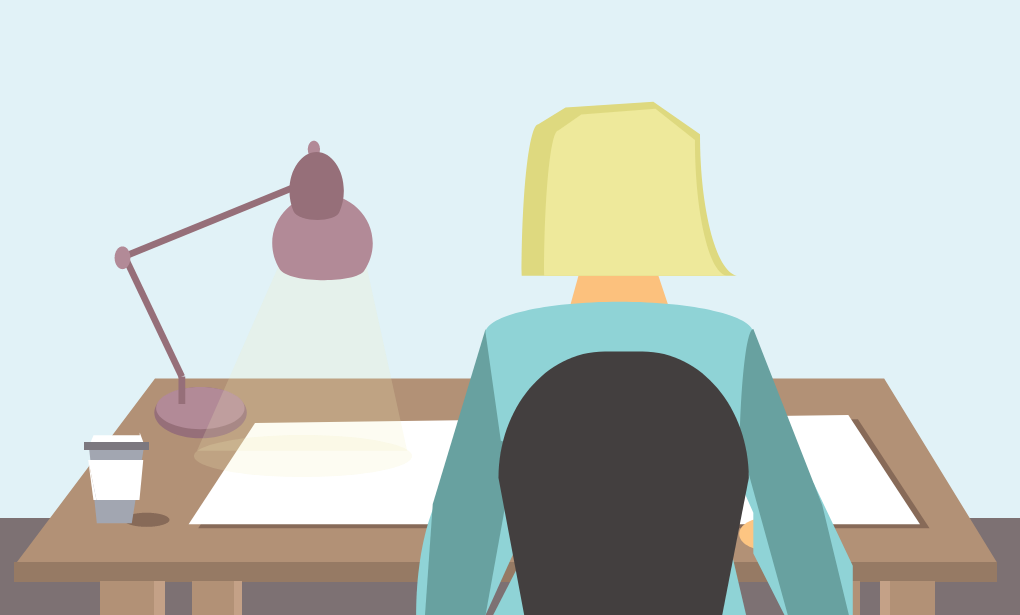A trend in office design may have unintentionally lent itself to a solution for self-isolating. There are several reasons that defend the versatile workspace concept, but a global pandemic was not at the top of the list for justification. Now, it probably will be. The theory of office design has had a diverse history. Like most trends, office design concepts fade and reemerge. Let’s take a generalized look through the decades.
In the 1950’s, the open office was the strategy of choice. Workers clocked in around 43 hours per week, and 30% of the workforce were women. In the 1960’s offices migrated toward the cubicle model. Workers averaged 41 hrs per week, and 33% of the workforce were women. The 1970’s celebrated ergonomic designs and cubicles were still widely popular. Work weeks were typically 40 hours long, and 38% of the workforce were women. In the 1980’s, Gen X’ers were of working age and they celebrated the corporate structure. The accessibility of the PC (Personal Computer) changed the workspace and how we work completely. Desks and furniture were designed to accommodate the heavy machines. The design of offices was dependent on maximizing efficiency. The work week stayed steady at 43 hours per week, and 43% of the workforce were women.
The 1990’s brought significant leaps in technology and the availability of the World Wide Web brought a level of unprecedented connectedness. The average work week was 39hrs long, and 43% of the workforce were women. In the 2000’s. true millennials entered the workforce and the design responded to the idea that spaces could contain more than one company and afford workers an alternative to the office like coffee shops and home offices. The average worker spent 38 hrs per week working, and 45% of the workforce were women. 2010 saw an increase in networking and collaboration primarily facilitated by technology. The spaces people work responded to technology. Smart phones are now common and everyone receives email from them and can work anywhere. We are wireless. The average person works 37.5 hours per week, and 46% of the workplace were women.
That brings us to the current decade, 2020. We see a heightened awareness of work-life balance. C-suites recognize the value of providing options for their employees. Company Mission Statements are critical to maintaining culture and identity for a company that is spread out as far as multi-continent. More companies are seeking modern spaces for their new younger employees. Office buildings are expected to provide amenities like workout facilities and childcare. Providing flex spaces that can be used for teleconferencing is a must. Desks are less divided by cubicles and open floor plans promote connectivity. Workspaces aren’t necessarily assigned to specific people. Anyone who wants to work from the office can set up for the day at a desk. Lockers store personal effects. Informal workspaces are desirable for a change of scenery throughout the day. Opportunities for serendipitous collaboration are ideal as well.
The versatility of the work space requires technology and infrastructure to adapt to employees preferences. Tami Anderson, Vice President of Sales & Marketing at Pigott, a company that specializes in workplace solutions & a Herman Miller Certified Dealer, had this to say: “While people are very capable of doing their individual work from home, the real challenge comes in making sure that team members continue to stay connected, engaged, feel that they are still being heard, and feel a sense of purpose and belonging. New Technologies like Slack or Microsoft Teams can help foster team connection and culture throughout the day, not just in scheduled meetings. Virtual video chats and meetings where team members can be seen and can see other also helps foster continued connection. We need to find new, creative ways to socialize digitally. Technology has suddenly become an essential tool for connection, while we are temporarily forced away from the physical office.”
Many companies had an infrastructure in place when the reality of COVID-19 set in and people began social distancing. Other companies quickly scrambled to put procedures and networks in place to enable work to continue while we isolate ourselves in an attempt to slow the spread of this virus.
While the silver lining in no way relieves the pain and suffering of those directly and indirectly affected by this global pandemic, it does pose some questions of what this means for the 9-5 desk jobs. Will we see another paradigm shift in office designs? Will home buyers evaluate prospective homes based on the office or den? Will South Dakota see a return to rural lifestyles as living in the city is no longer a requirement to stay connected? The future holds many unknowns, but if anything is certain, it is that life will go on. We will pick up the pieces and learn from the events that necessitated a sudden separation.
Tami provides some insight, “At Pigott and Herman Miller we are also considering ways to create social distancing in the workplace once we return back to the office, without hindering performance. Will COVID-19 change the way that we approach open office design moving forward? We think it is a real possibility.”
Sources
https://hubblehq.com/blog/office-space-timeline-past-present-future-infographic
Click here to learn more about Pigott. Pigott is Iowa and South Dakota’s Certified Herman Miller Dealer and DIRTT Partner, creating places to inspire people.
Click Here to learn more about Pigott. Pigott is Iowa and South Dakota’s Certified Herman Miller Dealer and DIRTT Partner, creating places to inspire people.

Since graduating from Kansas State in 2012, Liz has gained experience from a variety of fields within the building industry. From drafting at a metal building manufacturer to working at architecture firms to assisting a real estate broker/developer, she has always had a passion for influencing the built environment. As an architect at Schemmer, Liz enjoys learning new things and refining her skills with help from other licensed professionals. She hopes to continue to shape the spaces and places around her in a positive way.


